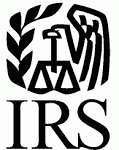The Department of Labor’s Employee Benefits Security Administration (EBSA) has issued a final rule under Title I of the Employee Retirement Income Security Act (ERISA) that creates new opportunities for groups of employers to band together and be treated as a single “employer” sponsor of a group health plan. The final rule adopts a new regulation at 29 CFR 2510.3-5. This post summarizes the major provisions of the rule.
The general purpose of the rule is to clarify which persons may act as an “employer” within the meaning of ERISA section 3(5) in sponsoring a multiple employer “employee welfare benefit plan” and “group health plan,” as those terms are defined in Title I of ERISA. The essence of the final rule is to set forth the criteria for a “bona fide group or association” of employers that may establish a group health plan that is an employee welfare benefit plan under ERISA. The rule sets forth 8 broad criteria that must be satisfied.
1) The final rule establishes a general legal standard that requires that a group or association of employers have at least one substantial business purpose unrelated to offering and providing health coverage or other employee benefits to its employer members and their employees, even if the primary purpose of the group or association is to offer such coverage to its members.
Although the final rule does not define the term “substantial business purpose,” the rule contains an explicit safe harbor under which a substantial business purpose is considered to exist in cases where the group or association would be a viable entity even in the absence of sponsoring an employee benefit plan. The final rule also states that a business purposes is not required to be a for-profit purpose. For example, a bona fide group or association could offer other services to its members, such as convening conferences or offering classes or educational materials on business issues of interest to the association members.
2) Each employer member of the group or association participating in the group health plan (the “Association Health Plan” or “AHP”) must be a person acting directly as an employer of at least one employee who is a participant covered under the plan.
3) A group must have “a formal organizational structure with a governing body” as well as “by-laws or other similar indications of formality” appropriate for the legal form in which the group operates in order to qualify as bona fide.
4) The functions and activities of the group must be controlled by its employer members, and the group’s employer members that participate in the AHP must control the plan. Basically – act like an employer sponsored group health plan, not like an insurance company.
5) The group must have a commonality of interest. Employer members of a group will be treated as having a commonality of interest if they satisfy one of the following:
- the employers are in the same trade, industry, line of business or profession; or
- each employer has a principal place of business in the same region that does not exceed the boundaries of a single State or a metropolitan area (even if the metropolitan area includes more than one State)
6) The group cannot offer coverage under the AHP to anyone other than employees, former employees and beneficiaries of the members of the group. Again, act like an employer sponsored group health plan, not like an insurance company.
7) The health coverage must satisfy certain nondiscrimination requirements under ERISA. For example, an AHP:
- cannot condition employer membership in the group or association on any health factor of any individual who is or may become eligible to participate in plan;
- must comply with the HIPAA nondiscrimination rules prohibiting discrimination in eligibility for benefits based on an individual health factor;
- must comply with the HIPAA nondiscrimination rules prohibiting discrimination in premiums or contributions required by any participant or beneficiary for coverage under the plan based on an individual health factor; and
- may not treat the employees of different employer members of the group or association as distinct groups of similarly-situated individuals based on a health factor of one or more individuals.
8) The group cannot be a health insurer.
The final rule also describes the types of working owners without common law employees (i.e. partners in a partnership) who can qualify as employer members and also be treated as employees for purposes of being covered by the bona fide employer group or association’s health plan.
Implications of the final rule will take some time to play out. The administration has stated that its intention behind the final rule is to allow “small employers – many of whom are facing much higher premiums and fewer coverage options as a result of Obamacare – a greater ability to join together and gain many of the regulatory advantages enjoyed by large employers.” The Congressional Budget Office estimated that 400,000 previously uninsured people will gain coverage under AHPs and that millions of people will switch their coverage to more affordable and more flexible AHP plans and save thousands of dollars in premiums.
For our part, we are evaluating the potential to assist smaller employers to save costs and improve the benefits in their health plans by establishing groups and associations to provide AHPs, and we will update our clients as those opportunities mature.
More from EBSA on Association Health Plans:
Final Rule
Fact Sheet
Frequently Asked Questions
News Release

